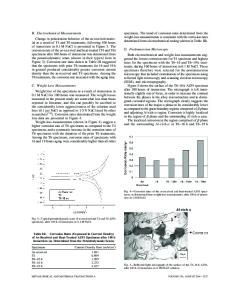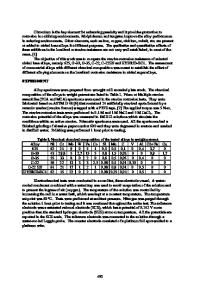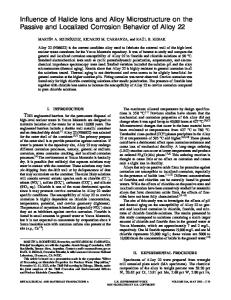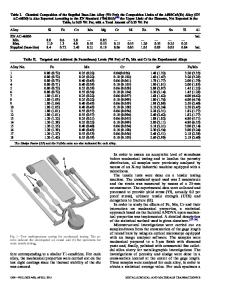The Influence of Microstrain Evolution by Tensile Straining on Localized Corrosion of Al-Li Alloys 2099 and 2196
- PDF / 2,658,292 Bytes
- 10 Pages / 593.972 x 792 pts Page_size
- 103 Downloads / 316 Views
ODUCTION
SINCE the 1920s, Al-Li alloys have been studied extensively for structural aircraft applications. Aircraft designers are interested in Al-Li alloys due to the need for more fuel-efficient and high-performance engines and structures. A one weight percent addition of Li to Al decreases density by approximately 3 pct, due to the low density of Li (0.53 g/cc), and increases the elastic modulus by approximately 6 pct. Extruded Al-Li alloys have been adapted for various applications in the airframe such as floor beams, wing stringers, and fuselage frames. Al-Li plate alloys have also been developed for structures such as wing panels.[1] While carbon fiber, boron fiber and non-metallic composites may offer an even greater reduction in density, the following make Al alloys attractive: manufacturing experience, utilization of existing manufacturing routes,[2] and relatively low acquisition and maintenance costs.[3] Li also leads to the formation of hardening precipitates, such as d¢(Al3Li) and T1 (Al2CuLi), which
E.E. WRIGHT is with Engineering Systems Inc. (ESi), 4215 Campus Dr., Aurora, IL, 60504. Contact e-mail: eewright@ engsys.com M.J. KAUFMAN is with the College of Applied Science and Engineering (CASE), Colorado School of Mines, 1500 Illinois Street, Golden, CO, 80401. G.R. WEBER is with The Boeing Company, 7575 12th Ave S, Seattle, WA 98108. Manuscript submitted February 7, 2018. Article published online December 6, 2019 1012—VOLUME 51A, FEBRUARY 2020
provide high strength and can promote fatigue crack growth resistance.[4] Al-Li alloys 2099 and 2196 in the T3-type temper are typically provided with at least 2.5 pct nominal strain. To produce contoured aviation sections, stretch forming of Al-Li extrusions and plate product is performed prior to artificial aging and can add up to 7 pct additional deformation. Including the as-received 2.5 pct nominal strain, the total amount of deformation prior to artificial aging can reach 9.5 pct in some areas of the stretch-formed components. It is accepted that heterogeneous nucleation of T1 precipitates occurs at dislocations.[5] Thus, straining prior to artificial aging enhances T1 precipitation by introducing dislocations,[6] promotes a more even distribution of the T1 phase, and reduces T1 precipitation at grain boundaries.[7] Cassada et al. demonstrated that deformation prior to aging speeds up T1 aging kinetics, improves yield strength, and increases the total volume fraction of T1.[8] However, it is worth mentioning that, because strain can have a pronounced effect on the aging response of Al-Li alloys, inhomogeneous distributions of strain can cause local differences in strength[9] and potentially other properties, such as corrosion resistance. The formation and distribution of precipitate phases in Al-Li alloys within grains and along grain boundaries are sensitive to the degree of strain imparted, and it is known that second phase particles present in Al-Li alloys may contribute to general and localized corrosion.[10] The purpose of the present study was to identify th
Data Loading...











